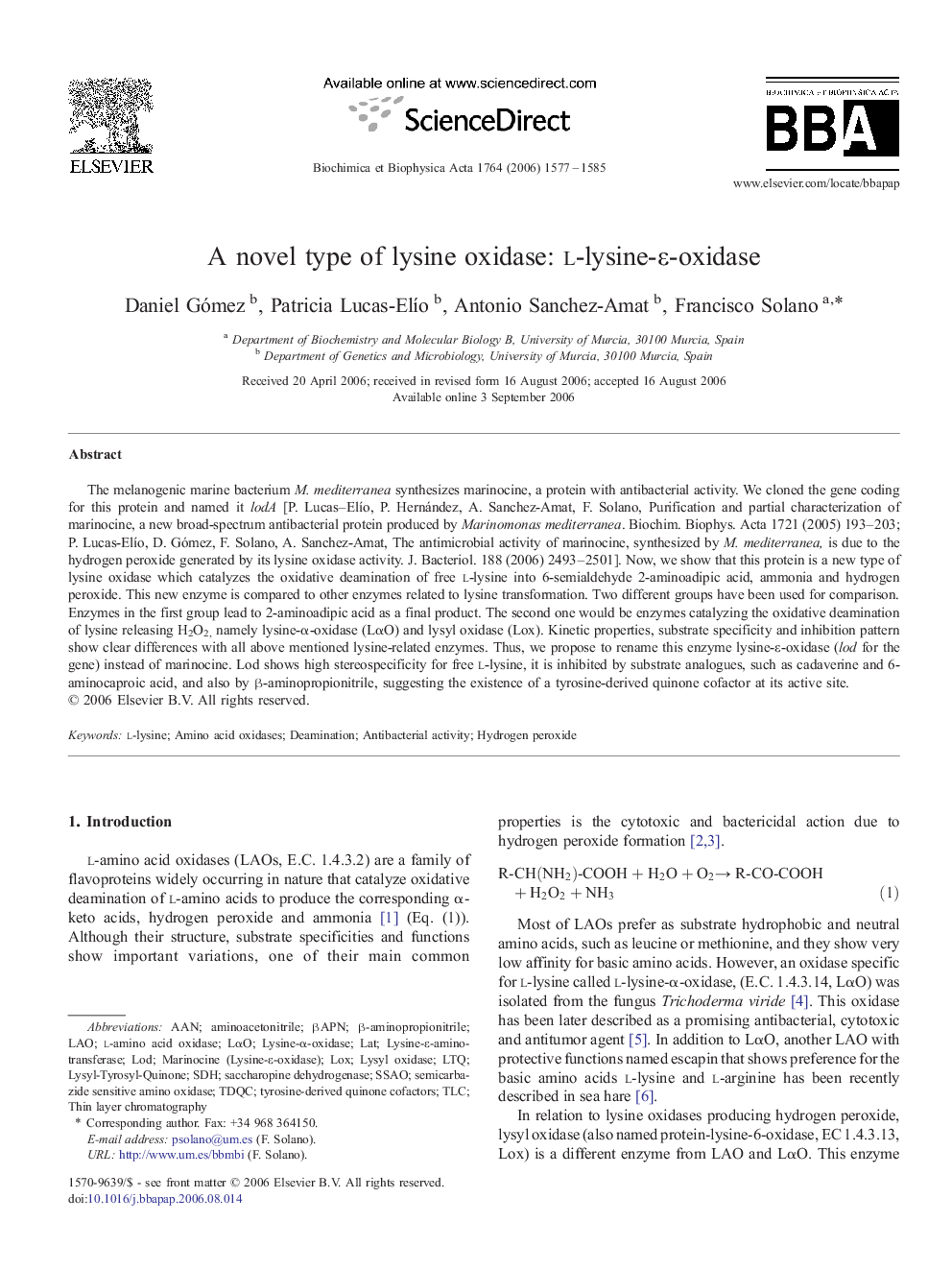| Article ID | Journal | Published Year | Pages | File Type |
|---|---|---|---|---|
| 1179399 | Biochimica et Biophysica Acta (BBA) - Proteins and Proteomics | 2006 | 9 Pages |
The melanogenic marine bacterium M. mediterranea synthesizes marinocine, a protein with antibacterial activity. We cloned the gene coding for this protein and named it lodA [P. Lucas–Elío, P. Hernández, A. Sanchez-Amat, F. Solano, Purification and partial characterization of marinocine, a new broad-spectrum antibacterial protein produced by Marinomonas mediterranea. Biochim. Biophys. Acta 1721 (2005) 193–203; P. Lucas-Elío, D. Gómez, F. Solano, A. Sanchez-Amat, The antimicrobial activity of marinocine, synthesized by M. mediterranea, is due to the hydrogen peroxide generated by its lysine oxidase activity. J. Bacteriol. 188 (2006) 2493–2501]. Now, we show that this protein is a new type of lysine oxidase which catalyzes the oxidative deamination of free l-lysine into 6-semialdehyde 2-aminoadipic acid, ammonia and hydrogen peroxide. This new enzyme is compared to other enzymes related to lysine transformation. Two different groups have been used for comparison. Enzymes in the first group lead to 2-aminoadipic acid as a final product. The second one would be enzymes catalyzing the oxidative deamination of lysine releasing H2O2, namely lysine-α-oxidase (LαO) and lysyl oxidase (Lox). Kinetic properties, substrate specificity and inhibition pattern show clear differences with all above mentioned lysine-related enzymes. Thus, we propose to rename this enzyme lysine-ε-oxidase (lod for the gene) instead of marinocine. Lod shows high stereospecificity for free l-lysine, it is inhibited by substrate analogues, such as cadaverine and 6-aminocaproic acid, and also by β-aminopropionitrile, suggesting the existence of a tyrosine-derived quinone cofactor at its active site.
